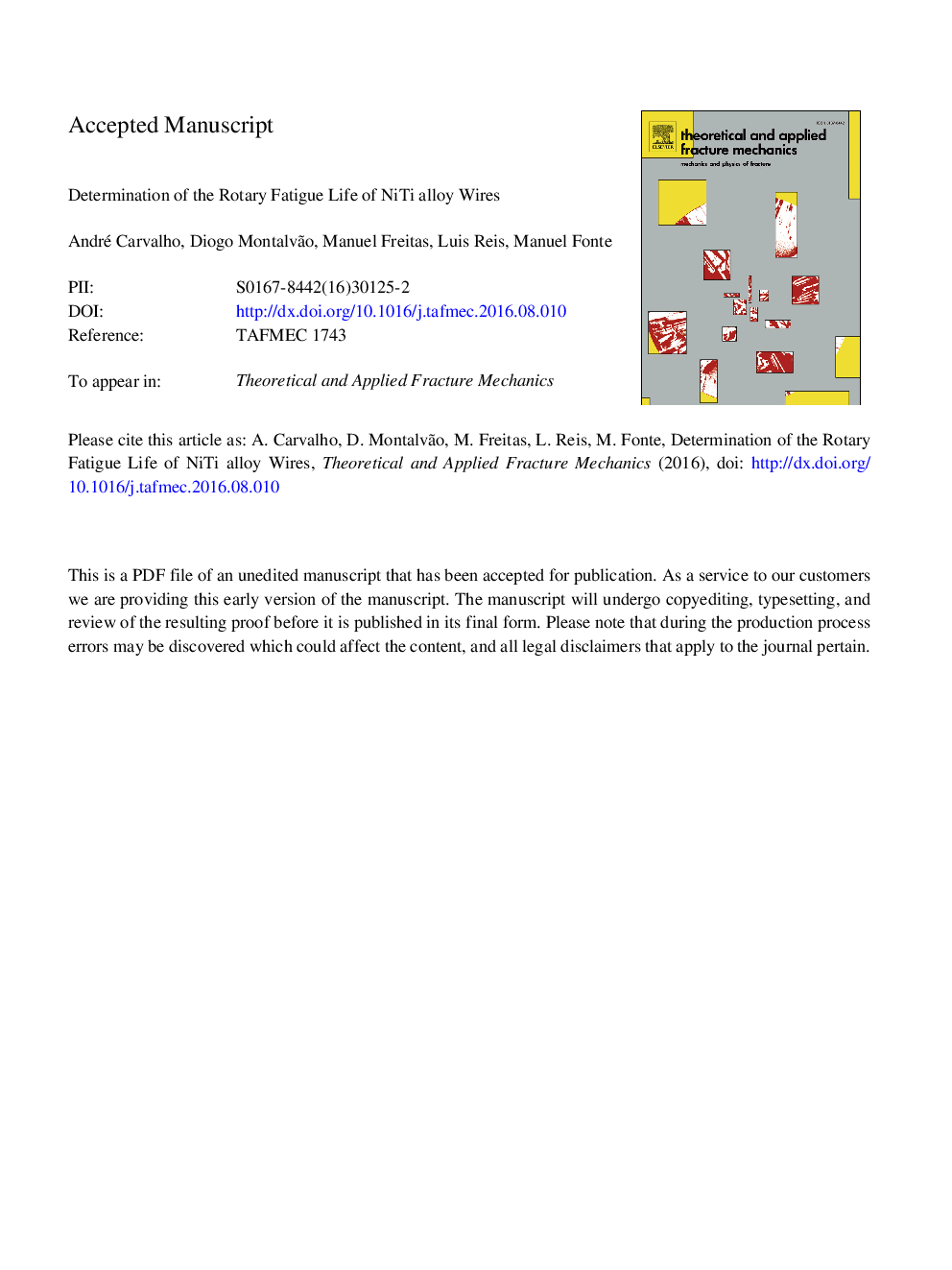| Article ID | Journal | Published Year | Pages | File Type |
|---|---|---|---|---|
| 5019816 | Theoretical and Applied Fracture Mechanics | 2016 | 22 Pages |
Abstract
Nickel-Titanium (NiTi) alloys with superelastic properties have been increasingly introduced as a substitute to more conventional alloys, such as stainless steel, in a variety of applications. In Dentistry, NiTi alloys are used in tools such as Endodontic rotary files, allowing the file to follow teeth root canals more easily than their stainless steel counterparts. Nevertheless, during surgery, the file is subjected to cyclic bending loading, since it is rotating while being deformed inside the curved canals and is prone to fracture due to fatigue, without showing any visible signals of degradation. Following a systematic approach, this work presents the results of rotary fatigue tests for several NiTi wires from different manufacturers (Memry and Euroflex). The formulation is presented, where the material strength reduction can be quantified from the determination of the strain and the number of cycles until failure. Experimental tests as well as numerical Finite Element Analysis (FEA) simulations are presented to better understand the fatigue fracture mechanisms present in NiTi alloys, showing that there is good agreement between the predicted strains (difficult to measure in such small wires) and the cycles to failure.
Related Topics
Physical Sciences and Engineering
Engineering
Mechanical Engineering
Authors
André Carvalho, Diogo Montalvão, Manuel Freitas, Luis Reis, Manuel Fonte,
